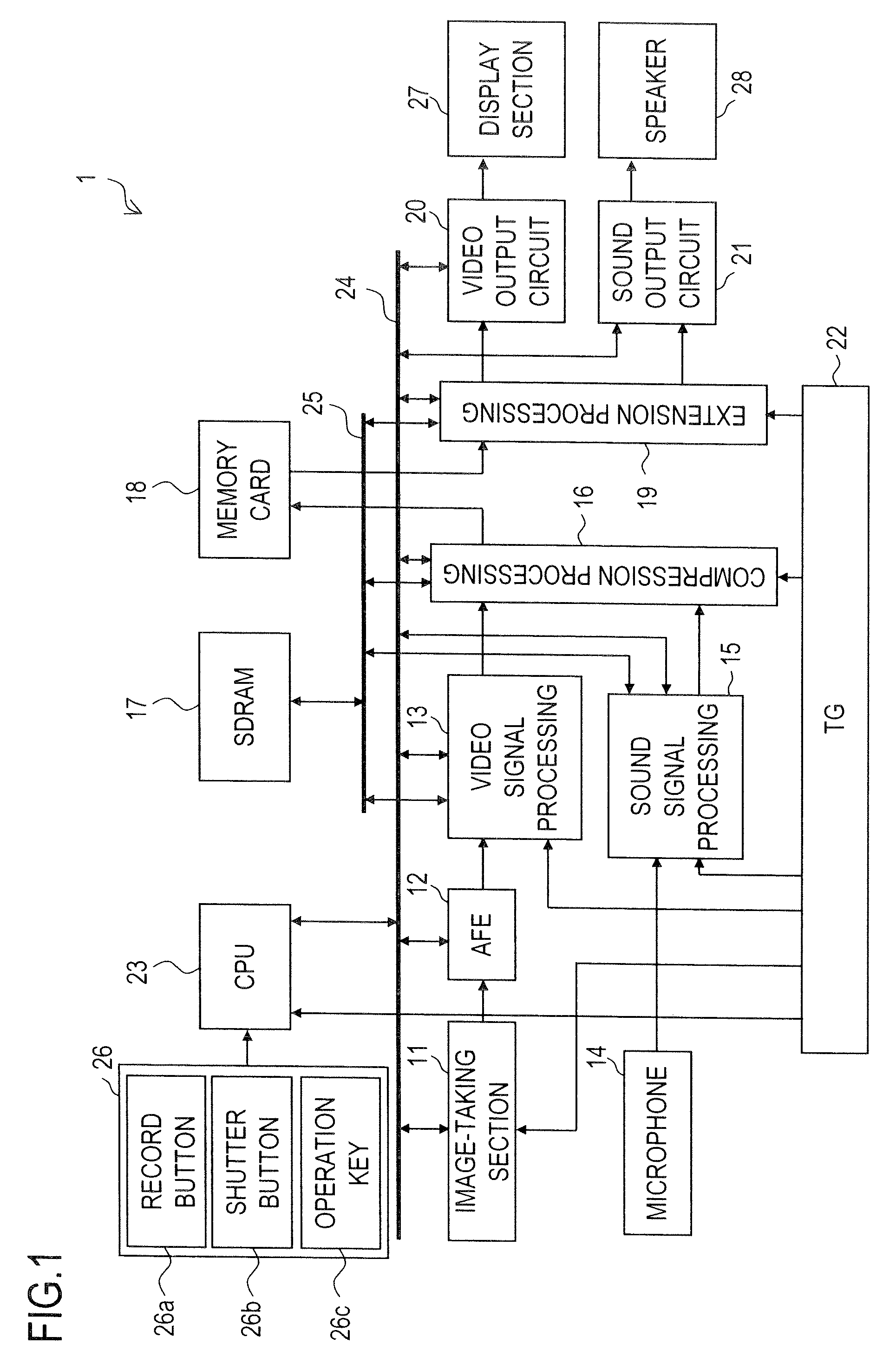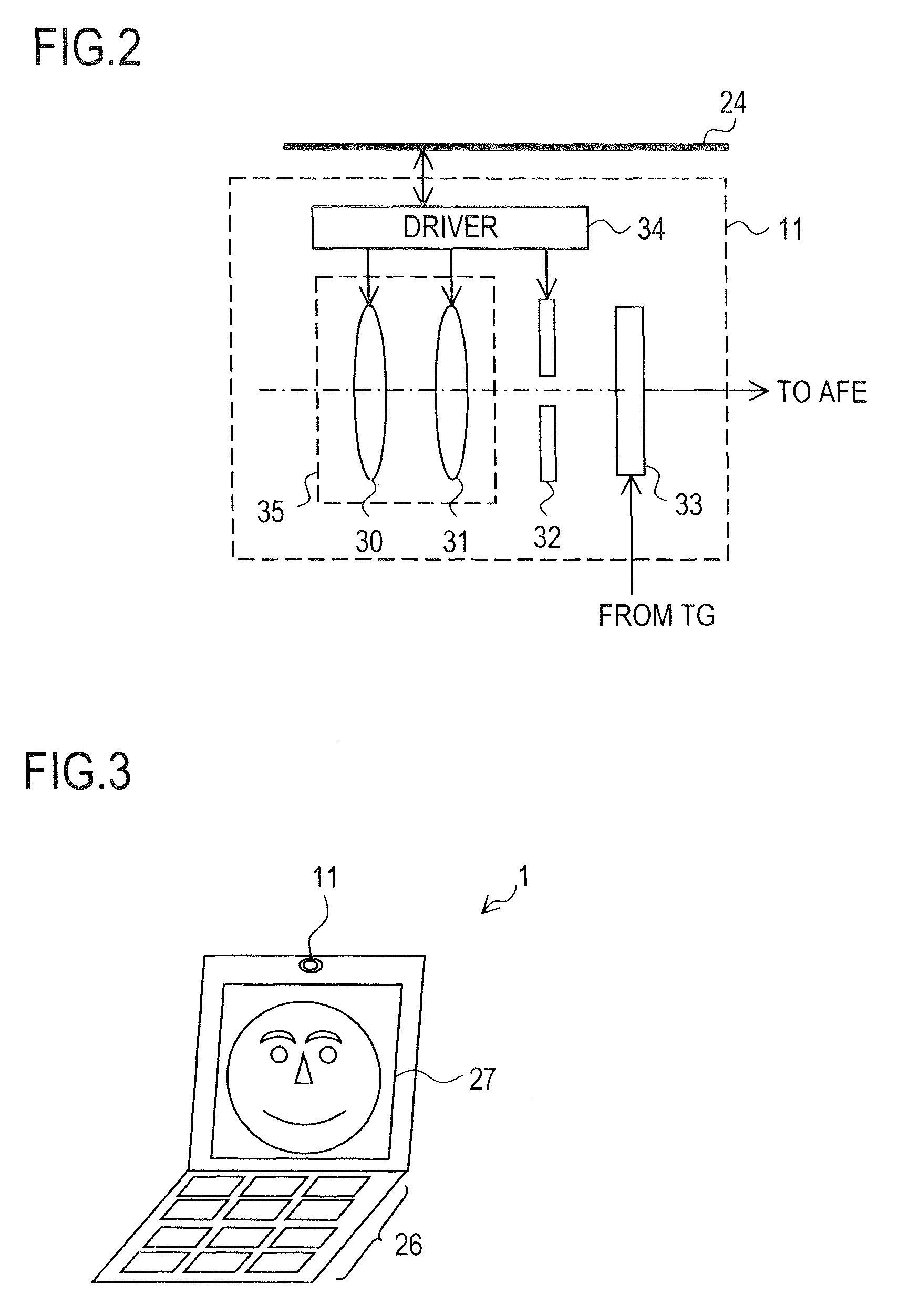Image-taking apparatus and output image generation method
a technology of image-taking apparatus and output image, which is applied in the field of image-taking apparatus, can solve the problems of subject extension off the photographing region, subject loss, distorted image, etc., and achieve the effect of reducing the change in the dimension of the specific subj
- Summary
- Abstract
- Description
- Claims
- Application Information
AI Technical Summary
Benefits of technology
Problems solved by technology
Method used
Image
Examples
first embodiment
[First Embodiment]
[0062]Next, a characteristic function of the image-taking apparatus 1 will be described.
[0063]This function is called a size adjustment function. First, the first embodiment of the size adjustment function will be described. The size adjustment function is executed in accordance with operation performed on the operation section 26 or the like in the photograph mode.
[0064]With the size adjustment function, an entire face or facial parts (eyes, mouth or the like) of a person included in a photographing region are handled as a moving image and they are displayed on the display section 27 on an enlarged scale. At this point, processing such as the one for avoiding a change in the size of a focused specific portion on the display screen is performed as appropriate. The size adjustment function is applied to cases such as where the display section 27 is used as a mirror, and is effective particularly in cases such as where one's face is made up while treating the display...
first modified processing example
[First Modified Processing Example]
[0120]First, the first modified processing example will be described. In the first modified processing example, based on the state of change in the size (dimension) of the specific portion α in the photographed image or based on the state of change in the size (dimension) of the related portion β in the photographed image, it is judged whether or not processing (change reduction processing) such as one corresponding to steps S301 to S304 of FIG. 11 can be executed. This judgment may be performed based on either of the changes since the size of the specific portion α and the size of the related portion P change in the photographed image in the same manner.
[0121]For simplified description purposes, the first modified processing example will be described below focusing on, of the specific portion α and the related portion β, the specific portion α. To perform the first modified processing example by using the related portion β, for necessary portions ...
second modified processing example
[Second Modified Processing Example]
[0128]Next, the second modified processing example will be described. Also in the second modified processing example, as in the first modified processing example, based on the state of change in the size (dimension) of the specific portion α in the photographed image or based on the state of change in the size (dimension) of the related portion β in the photographed image, it is judged whether or not processing (change reduction processing) such as one corresponding to steps S301 to S304 of FIG. 11 can be executed. In the second modified processing example, the amount of change in the size is referenced.
[0129]For simplified description purposes, the second modified processing example will be described below focusing on, of the both specific portion α and related portion β, the specific portion α. To perform the second modified processing example by using the related portion β, for necessary portions, the specific portion α, the size As, and the re...
PUM
 Login to View More
Login to View More Abstract
Description
Claims
Application Information
 Login to View More
Login to View More - R&D
- Intellectual Property
- Life Sciences
- Materials
- Tech Scout
- Unparalleled Data Quality
- Higher Quality Content
- 60% Fewer Hallucinations
Browse by: Latest US Patents, China's latest patents, Technical Efficacy Thesaurus, Application Domain, Technology Topic, Popular Technical Reports.
© 2025 PatSnap. All rights reserved.Legal|Privacy policy|Modern Slavery Act Transparency Statement|Sitemap|About US| Contact US: help@patsnap.com



